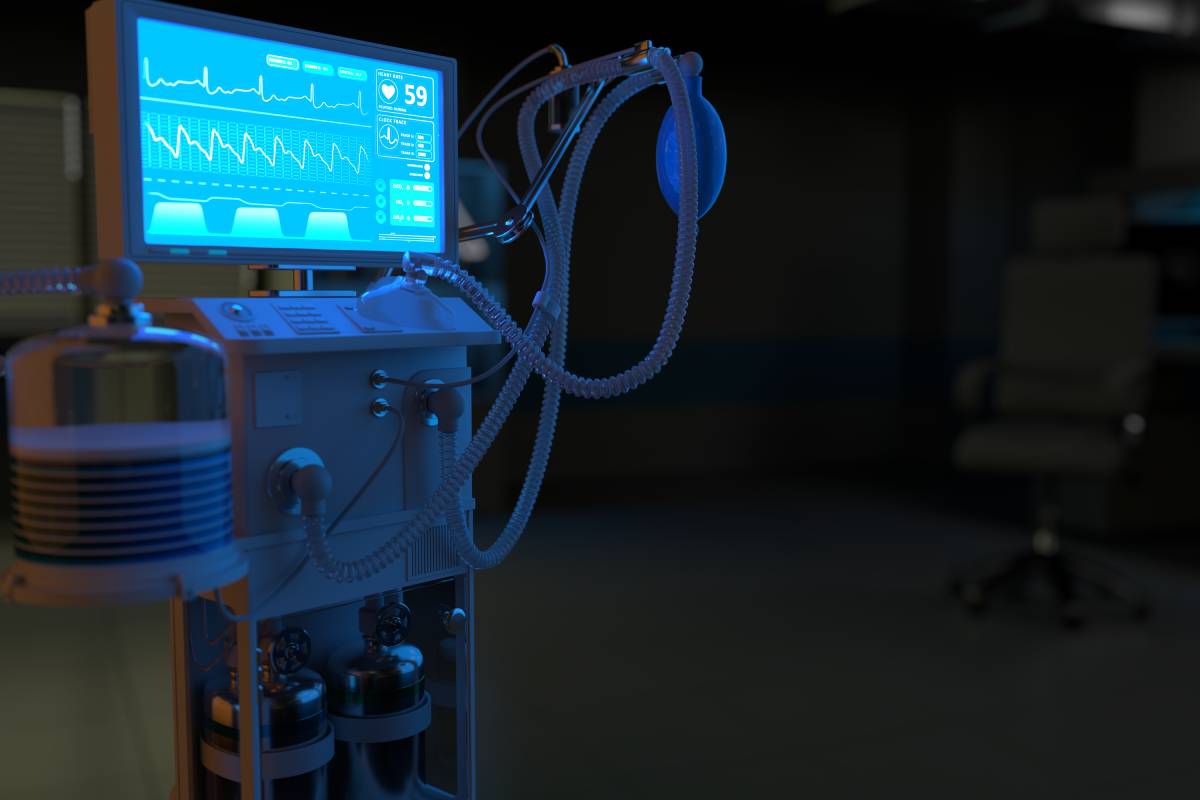The Development of Mechanical Ventilation

In the early days of the Covid-19 pandemic, ventilator shortages and their importance in the treatment of the disease brought renewed attention to mechanical ventilation. Ventilatory assistance has been used to help patients with airway injuries, lung damage and other conditions for centuries. However, the history of modern mechanical ventilators dates back to the mid-19th century.
The earliest mention of mechanical ventilation comes in the writings of Vesalius, a 16th century academic. His writings on the human anatomy detailed a method of positive pressure ventilation and described a lifesaving procedure that today would be called a tracheotomy [1]. However, most of his research was hypothetical — it would take several centuries until a machine capable of mechanical ventilation was invented.
The first mechanical ventilators were produced in the 1800s. The earliest mechanical ventilators worked by enclosing the patient in a box that contained negative pressure, which was then used to replace the patient’s respiration. In 1864, Alfred Jones created a prototype device wherein the patient’s seated body was enclosed within a sealed box. A plunger was used to create negative pressure, which would cause inhalation. When that plunger was released, the pressure would stabilize, causing exhalation [2].
A few years later, in 1876, the first iron lung was built, but it was not widely used at first [1]. However, the poliomyelitis outbreak in the early 20th century led to a widespread need for ventilators. The virus that causes the disease can attack the respiratory system, causing respiratory failure [3]. In 1929, an electrically-powered ventilator was built and sold by Drinker and Shaw. This became the standard for treating polio in the United States [4]. Later versions allowed nurses to access the patient.
The first positive pressure ventilators were developed in the 1950s, spurred by a new, larger outbreak of polio. At first, these ventilators were non-invasive but, due to their efficacy, invasive positive pressure ventilators were soon the norm. The early generations of ICU ventilators also offered rudimentary monitoring capabilities, which allowed physicians to monitor the patient’s tidal volume and respiratory rate [5]. The third generation of ventilators would include more robust gas delivery systems, as well as additional alarm and monitoring functions.
The current generation of ventilators is the result of more than five decades of research into positive pressure ventilators, as well as centuries of observations regarding mechanical ventilation. These ventilators offer advanced monitoring capabilities and a host of automated features. Likewise, they also offer newer modes of ventilation, including pressure-control ventilation, synchronized intermittent mandatory ventilation, and pressure-support ventilation (PSV) [6]. However, many of the hazards of invasive ventilators that marred the early years of the technology still exist.
Even as positive pressure ventilators continue to dominate, the pandemic has led some researchers to question whether there is still a role for negative pressure ventilators. Unlike positive pressure ventilators, negative pressure ventilators tend to cost less and have a lower risk of complications. More recent proposals are also significantly smaller in size than the iron lungs of 20th century. Regardless of the form of ventilation, future mechanical ventilators will undoubtably remain one of the most essential tools in anesthesiology, surgery, and intensive care.
References
[1] Slutsky, Arthur S. “History of Mechanical Ventilation. From Vesalius to Ventilator-Induced Lung Injury.” American Journal of Respiratory and Critical Care Medicine, vol. 191, no. 10, 2015, pp. 1106–1115., doi:10.1164/rccm.201503-0421pp.
[2] The Evolution of “Iron Lungs”: 1928-1978. J.H. Emerson Co., 1978.
[3] Wunsch, Hannah. “The Outbreak That Invented Intensive Care.” Nature, 2020, doi:10.1038/d41586-020-01019-y.
[4] Maxwell, James H. “The Iron Lung: Halfway Technology or Necessary Step?” The Milbank Quarterly, vol. 64, no. 1, 1986, p. 3., doi:10.2307/3350003.
[5] Kacmarek, R. M. “The Mechanical Ventilator: Past, Present, and Future.” Respiratory Care, vol. 56, no. 8, 2011, pp. 1170–1180., doi:10.4187/respcare.01420.
[6] Jain, Rajnish K., and Srinivasan Swaminathan. “Anaesthesia Ventilators.” Indian Journal of Anaesthesia, vol. 57, no. 5, 2013, p. 525., doi:10.4103/0019-5049.120150.
[7] Abughanam, Nada, et al. “Investigating the Effect of Materials and Structures for Negative Pressure Ventilators Suitable for Pandemic Situation.” Emergent Materials, vol. 4, no. 1, 2021, pp. 313–327., doi:10.1007/s42247-021-00181-x.